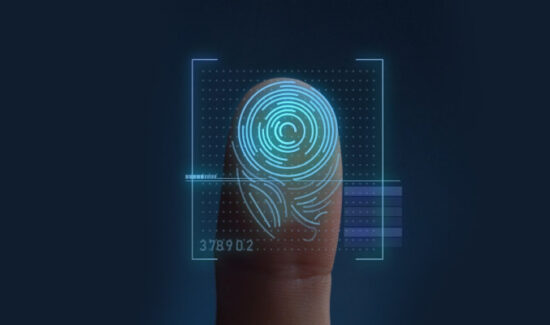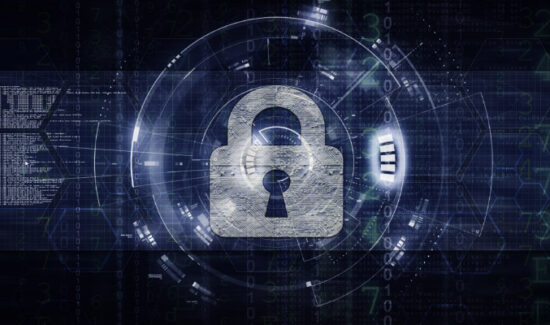World Password Day Quotes from Industry Experts in 2025

For World Password Day 2025, the editors at Solutions Review have compiled a list of comments from some of the leading industry experts.
As part of this year’s World Password Day, we called for the industry’s best and brightest in Identity and Access Management and the broader cybersecurity market to share best practices, predictions for the future of passwords, and personal anecdotes. The experts featured represent some of the top influencers, consultants, and solution providers with experience in these marketplaces, and each projection has been vetted for relevance and ability to add business value. The list is organized alphabetically by company name.
World Password Day Quotes from Industry Experts in 2025
Tim Eades, CEO and Co-Founder at Anetac
“As we recognize World Password Day, it’s time to acknowledge a fundamental matter in identity security. Credentials are the keys to the castle. Passwords alone cannot safeguard our digital identities in today’s complex, hybrid environments. Identity-based vulnerabilities have become the primary attack vector for modern breaches.
“Our research reveals alarming statistics across industries: passwords unchanged for 15+ years in financial institutions, 74 percent of healthcare credentials remain unchanged for over 90+ days, and widespread credential sharing in critical infrastructure. The basics are critical. Without proper cyber hygiene, enterprises across the globe will continue to be victims of bad actors.
“Weak or unchanged passwords across human and non-human identities create a dangerous, often overlooked security gap that can quickly go from a headache for security teams to a full-blown breach. A dormant service account or an orphaned human account with an old or weak password is a bad actor’s most exciting find. Utilizing complex passwords, refreshing them every 3 months, using multifactor authentication when available, and investing in modern identity security solutions are necessary to minimize the likelihood of a breach.
“That’s why password hygiene remains a cornerstone of effective identity security. The ability to detect and assess credential age, behavioral anomalies, and lifecycle blind spots across all identities is critical. Identity security isn’t just about who has access—it’s about how that access is managed, monitored, and secured over time. Not only this, you need the tools to actually know the identity behind the account and that they are who they say they are.
“Passwords aren’t disappearing, but their importance in our security strategies must be properly acknowledged within the broader identity ecosystem. It may be an aging technology, but they remain a top attack vector and we need to treat them, and the accounts they protect, with the same seriousness we give to any other security asset.”
Arun Shrestha, CEO and Co-Founder at BeyondID
“Passwords are old news, and World Password Day—once a reminder of cybersecurity best practices—now underscores the importance of phasing out the very authentication method it once championed. With stolen credentials topping the breach origin charts and phishing attacks up 4,151 percent since the launch of ChatGPT, it’s clear that traditional passwords are no longer sufficient. Modern threats call for passwordless authentication—not just for stronger security, but for a frictionless user experience. It’s time to answer the phone.”
Randolph Barr, CISO of Cequence
“World Password Day is a great time to remind people about the importance of maintaining good password practices. Passwords are the most important line of defense for organizational and personal information, which means they are also a top target for threat actors.
“The easiest way to keep attackers at bay is to make strong, unique passwords for each account. One of the most common attack tactics is a brute force attack, which is an authentication-related attack that takes advantage of people who use either generic or shared passwords. By exploiting this weakness, cyber-criminals can access an entire organization with one faulty password.
“Multi-factor authentication is an additional preventive measure that can help protect information; many banking and fintech enterprises make use of the safeguards it brings. Password managers are also helpful, as they store multiple passwords across separate accounts, all protected by one ultra-strong master password.
“While password hygiene and multi-factor authentication remain essential today, the cybersecurity community is clearly moving toward a passwordless future. Even the strongest passwords can be phished or exposed, which is why many Fortune 100 technology companies have transitioned large portions of their workforce to passwordless authentication using mobile authenticators, device-based login, and biometric verification. Additionally, global financial institutions are enabling passkey support and app-based logins, while Fortune 500 retail and consumer platforms are deploying passwordless login options to reduce fraud and improve user experience.
“To prepare for this future, organizations should begin testing passwordless flows within internal environments, choosing identity platforms that support passkeys and FIDO2 standards. On the individual level, users can explore these capabilities already available on major devices, such as Android, Google, iOS, and MacOS (to name a few).”
Art Gilliland, CEO at Delinea
“Passwords still are the gatekeepers of our digital identities, but relying on traditional passwords is simply not enough. Cyber-criminals are getting smarter when attacking passwords, especially those tied to privileged accounts, to breach networks and access sensitive data. With 80 percent of security breaches involving the misuse of privileged credentials, it’s clear that organizations must adopt a Privileged Access Management (PAM) approach, combined with Zero Trust principles for data protection.
“It’s essential to use World Password Day as a reminder that password security alone isn’t enough. We must never assume trust, especially privileged accounts, and always verify every access request. By taking control of who has access to what, when, and how, organizations can significantly reduce the risk of breaches. Smart identity security starts with Zero Trust and PAM, because data safety begins with stronger, verified access.”
Tony Ball, President of Payments and Identity at Entrust
“For decades, passwords have been the weak link in cybersecurity–outdated, overused, and increasingly ineffective. But now, organizations are making a clear shift. Multi-factor authentication and sign-in links have emerged as the primary methods for user authentication across the US, UK, and globally, overtaking passwords.
“This step change comes as over half of business and IT decision-makers report higher fraud attempts with username and password alone compared to other methods. We’re at a cybersecurity inflection point: passwords are no longer sufficient. Modern, layered authentication methods, such as facial biometrics, device recognition, or generated codes, are stepping in.
“Rather than forcing users to create longer, more complex passwords, it’s time for organizations to embrace a passwordless future where customers and employees can prove their identity conveniently and securely using their biometrics. This approach reduces risk, streamlines access, and meets the expectations of today’s digital-first users.”
Joel Burleson-Davis, Chief Technology Officer at Imprivata
“This World Password Day, it seems appropriate to shift the discussion from securing and managing passwords to the demise of the password. Passwords have served us well (sort of), and we’ve been long talking about ditching the traditional, complex password because of their burden and unintentional insecurity. However, with every second mattering in critical work, now more than ever, passwordless authentication has become business-critical.
“There are signs of good adoption of both passwordless strategies and shunning our old password-burdened ways in mobile devices, which are built with and extensively leverage facial recognition for security purposes, but some of our most critical technologies in our most critical sectors have been reluctant to implement similar solutions in their operations. As life- and mission-critical industries like healthcare and manufacturing cope with staffing challenges while being increasingly targeted, it’s time they reconsider access management and their relationship with the password paradigm.
“In healthcare, for example, and in particular, the delivery of health care, where a 17-character password is not practical for clinicians who are treating patients who need rapid and frequent access to Electronic Health Records (EHRs) in all kinds of situations. Entering a complex password for these users only creates barriers that delay patient care, eats up clinician time, and exacerbate burnout.
“Passwordless solutions, particularly biometrics-based ones, offer a tailored and frictionless experience that enables everyone from healthcare providers to manufacturing operators to maintain the highest security standards while empowering them to deliver timely, critical work without unnecessary barriers. I look forward to a World Password Day in the future that is full of cheering and celebration because we’ve finally released ourselves from the burden of putting memorized, complex strings into a little prompt box for the sake of security.”
Erich Kron, Security Awareness Advocate at KnowBe4
“Reusing passwords across different websites and services can be a catastrophic mistake. If there is a data breach at a website and bad actors are able to steal the passwords, they use a technique called credential stuffing to try the usernames and passwords to access various popular websites such as credit card portals, retail websites, or banking accounts. This is how a password stolen from a hobby forum could lead to a bank account being compromised.
“Multifactor authentication, also known as MFA or two-step authentication, can significantly increase a login’s security. While not foolproof, it makes it much tougher for cybercriminals to log into an account even if they steal your credentials. These options are available on most shopping, credit card, and bank websites, as well as social media accounts.”
Stephanie Schneider, Cyber Threat Intelligence Analyst at LastPass
“World Password Day is a great reminder for every organization that identity access management is the foundation of effective company security. Abusing legitimate credentials is one of the easiest and most common ways hackers gain unauthorized access to systems. Given the rise of infostealers over the last few years, which frequently target credentials and other sensitive data to resell on underground marketplaces, acquiring these is easier than ever. Credentials and session cookies stolen from employees’ personal devices can be used to breach corporate networks.
“A key aspect of stealers is their heavy reliance on the ‘spray-and-prey’ tactic, rather than directly targeting corporate networks, they’re counting on individuals having weaker security on their personal devices and using their work credentials on personal devices. The time from infection via stealer malware to the time that information is posted to the dark web can be speedy, especially with automation tools. Organizations must monitor for exposed credentials and change credentials as quickly as possible to disrupt breaches and attacks before they can occur. In a world where hybrid work has blurred the lines between personal and professional devices, businesses can’t afford to be casual about credential management.
“Using strong, unique passwords is just the tip of the iceberg when protecting your identity access. Reusing passwords across services is still one of the most common mistakes employees make—and one of the easiest ways for attackers to gain access. Requiring multi-factor authentication (MFA) should be standard for every business account, and it is a good idea for personal accounts, too.
“This World Password Day, take a look at your access policies. Are you protecting your company or making it easier for someone else to break in?”
“Leverage passkeys as the primary authentication method whenever possible. While passkeys are not immune to cyber-attacks, they are significantly more secure and phishing-resistant because they are linked to a device or leverage biometric authentication. Plus, they’re a whole lot easier to manage than constantly juggling new password combinations.”
Anthony Cusimano, Solutions Director at Object First
“I believe the death of the password is just around the corner. Passwords are no longer a secure method of authentication and should not be treated as secure. So, I’ll share the advice I have taken up in the last year: use a password manager, app-based or browser-based (either works!).
“Password managers securely store your passwords in a locked vault and come with convenient browser extensions that autofill logins. They can also generate unique, complex passwords for every account. Many of these tools allow you to customize password requirements according to your preferences, including specifying length and incorporating symbols, numbers, and mixed case. Additionally, password managers can alert you to duplicate or weak passwords and often suggest optimal times for changes.
“The password alone is NOT a secure authentication method; that’s why I have given up trying to maximize their security and left the brainwork to someone else. It’s 2025—let an app do the password legwork for you, and here’s to hoping that passwords become a thing of the past sooner rather than later.”
Nicolas Fort, Director of Product Management at One Identity
“Passwords have come a long way, from punch-tape reels in 1961 to the world of multi-factor authentication and fingerprint identification we inhabit today. The next leap is already happening—passkeys tied to devices, one-time AI-generated tokens, and even blockchain-backed session receipts. It’s no accident that password technology is constantly evolving.
“Cyber-attacks are more frequent, threat actors have more sophisticated tools at their disposal, and as businesses continue to store more and more sensitive data online, regulators are rightly demanding that they keep up. The EU’s NIS2, the UK’s Cyber Resilience Act, DORA, HIPAA, and countless other rules and regulations now demand rock-solid control over user accounts at every touchpoint. That means audited sessions, behavioral analytics, rotating passwords, and just-in-time credentials—so that no matter how hard attackers try, there’s simply nothing there to steal.”
“World Passkey Day is a reminder that the future of authentication is here—and it’s passwordless. Passwords have long been a point of vulnerability, often leading to breaches and user frustration. Passkeys represent a meaningful step toward improving both security and usability, moving us closer to a more resilient digital infrastructure. They’re especially valuable in securing high-risk interactions like financial transactions, where strong, phishing-resistant authentication is critical.
“FIDO passkeys take traditional authentication a step further by using cryptographic credentials stored on a user’s device, ensuring identity verification and security. This method strengthens authentication across desktops and mobile devices, creating a more secure digital environment. As the adoption of passkeys grows, I’m confident they will be key to transforming how we protect our most sensitive online interactions.”
Drew Perry, Chief Innovation Officer at Ontinue
“As positive a day as World Password Day is, I look forward to the day it no longer exists or is at least renamed! With the rise of passkey support across major platforms and devices, we’re finally seeing a shift towards more secure and user-friendly authentication. Passkeys are cryptographic credentials that eliminate the need for passwords entirely, offering phishing-resistant, biometric-based access. It’s time we moved beyond passwords, which are too often reused, weak, or compromised. Simpler identity protection is needed so we, as humans, don’t just pick a random string of characters that we will never remember!”
“We have come a long way. Password manager adoption is rising, multi-factor authentication is available for most critical online services, and people are reusing the same passwords less. But still, hackers are succeeding in their attacks. We have been saying since the early 2010s that “hackers don’t hack in, they log in,” and as time goes on, it becomes even more true.
“Stolen credentials overtook email phishing as the second most frequently observed initial infection vector in 2024 during intrusions into businesses. At Ontinue, we have witnessed first-hand the rise of sophisticated infostealer malware, which captures passwords as they are entered by users during login. This enables attackers to simply log in if no other secondary authentication methods are enabled, which, sadly, is often the case.
“Awareness is key. Enable passkeys where possible. I suggest we lay the password to rest and embrace the passwordless future.”
“Passwords have long been a security crutch; in today’s digital landscape, they’re quickly becoming a liability. Users continue to rely on weak, repurposed credentials, making them easy targets for sophisticated cyber-attacks fueled by AI. Recent data shows that 87 percent of consumers are concerned about identity fraud, yet many still depend on outdated methods to secure their most sensitive data. Even worse, 48 percent of IT leaders admit they’re not confident their current defenses can withstand AI-driven attacks. That should be a wake-up call. With the rise in phishing, credential stuffing, and deepfake scams, it’s time for organizations to retire traditional passwords altogether.
“In the spirit of World Password Day, we must double down on access solutions that eliminate the guesswork and the risk. Passwordless authentication, like biometrically protected passkeys and secure device-based login, not only strengthens security but also improves the user experience. Organizations must embrace a future where identity is both frictionless and fundamentally more secure.”
Denny LeCompte, CEO of Portnox
“World Password Day serves as an annual reminder of a universal truth: passwords are a pain. Despite being a cornerstone of our digital lives, they consistently fall short. From the widespread practice of password reuse—a virtual invitation to cyber-criminals—to the ease with which they can be compromised through social engineering or simple guessing, the inherent weaknesses of password-based authentication are undeniable.
“While Multi-Factor Authentication (MFA) has been lauded as a critical security layer, our recent findings indicate a growing unease among security leaders. A staggering 99 percent of CISOs worry that MFA alone doesn’t adequately protect their organizations, with concerns amplified in younger companies. The consensus is clear: 100 percent believe MFA struggles to keep pace with the evolving threat landscape.
“This reality is driving interest in passwordless authentication methods. With compromised passwords implicated in a significant majority (81 percent) of breaches, the appeal of eliminating them entirely is obvious. While only a small fraction (7 percent) of organizations have fully embraced passwordless solutions, a substantial number (32 percent) have begun or completed implementation, and a further 63 percent are actively planning or open to adoption.
“The benefits are compelling: over half of CISOs anticipate stronger access control and an improved employee experience. However, challenges such as cost, complexity, and potential user resistance need to be addressed for widespread adoption.
“The journey towards a more secure, passwordless future requires a strategic approach. Organizations must prioritize robust identity verification processes, such as certificate-based authentication, and embrace a Zero Trust security model. Continuous risk assessment, employee education, and a strong security culture are also crucial components.
“While passwords may not disappear overnight, the momentum towards passwordless authentication is building. World Password Day is an opportune time to acknowledge the password headache and explore and embrace the promising alternatives that can truly enhance our digital security. The future of access is increasingly looking less like a complex string of characters and more like a seamless, secure experience.”
Melissa Bischoping, Head of Security Research at Tanium
“On this World Password Day, it’s worth reflecting on how far we’ve come, and how far we still need to go in securing our digital identities. The humble password has been a cornerstone of how we access data and technology since 1961, when MIT’s Compatible Time-Sharing System (CTSS) became the first system to leverage modern passwords for safeguarding access to private files. In the 64 years since, passwords have evolved in length, complexity, and character requirements, but despite these advancements, they’ve also introduced layers of complexity to the user experience, resulting in a more burdensome method of securing identity and file access.
“Today, the average user manages 80-100 passwords, more than most of us can possibly keep track of. As a result, we’ve entered the era of password managers, in other words, one ‘super password’ to secure all the others. On the surface, this is a major step forward in usability (and an essential method to encourage users to use complex, unique passwords for every account), but we’re still not getting it quite right when it comes to password security. Here are a few key tips to strengthen password security.
For software providers:
- MFA should be mandatory and not locked behind a premium subscription tier.
- All apps should enable single-sign-on (SSO) by default for easier management of secure accounts.
- Don’t make it unnecessarily difficult to update or change credentials; this will make the user more likely to stick to the outdated, weaker password.
- Software providers should spend more time on meaningful user experience research and design for password management.
For technology users:
- Secure your primary password with additional levels of protection like robust, phishing-resistant MFA
- Use at least one form of MFA; for most users, any MFA is better than none.
- For better security, use passkeys or hardware tokens (like Yubikeys) over passwords paired with SMS-based MFA.
- Take advantage of password manager features like password audits, reuse detection, and breach alerts.
- Review your cell phone provider’s offerings for additional layers of security to prevent a SIM-swapping attack.
- Review your email provider’s additional security features that can be enabled; this is especially important since email accounts are often used as a password recovery option for OTHER accounts.
- Using more secure alternatives, like passkeys, in modern operating systems and apps can help less-technical family and friends adopt stronger data protections.
- Regularly check the security of SSO accounts used for logging into platforms like Google, Facebook, and Apple ID. An attacker can use these individual accounts as the ‘keys to the kingdom,’ so they warrant additional protections.
Carla Roncato, VP of Identity at WatchGuard
“Today, it’s not just careless password reuse or weak combinations that pose a threat—it’s the industrial-scale theft and sale of login data. Credentials are harvested through phishing, malware, and breaches, then packaged, sold, and exploited at astonishing speed. A single leaked password doesn’t just unlock one account; it can be a skeleton key to an entire digital identity.
“Dark web marketplaces function with the efficiency of e-commerce platforms, complete with customer service and user reviews. For as little as a few dollars, attackers can purchase verified credentials tied to financial services, corporate VPNs, or personal email accounts. Once inside, they move laterally, escalate privileges, and often remain undetected for weeks or months.
“On this World Password Day, the question is no longer ‘Are your passwords strong enough?’ but ‘Do you know if your credentials are already out there?'”
“Organizations must treat credential exposure as a threat to be hunted and mitigated, not just a hygiene issue. That means proactive monitoring of the dark web, real-time alerting on compromised credentials, and an incident response plan that assumes breach, not just tries to prevent it. Cyber-criminals have evolved. It’s time our mindset around password security evolves, too.
Munu Gandhi, President of IT Solutions at Xerox
“On World Password Day, I encourage every organization to prioritize strong password protocols as a critical part of cybersecurity. At Xerox, we’re committed to Zero Trust principles—using multi-factor authentication, regular updates, and user education to protect data wherever it’s accessed. Strong passwords aren’t just good practice, they’re essential to keeping your business secure.”
Kern Smith, VP of Global Solutions at Zimperium
“World Password Day is a timely reminder: passwords are only as strong as the device they’re stored on. As cyber-criminals adopt a mobile-first attack strategy, mobile devices have become the front door to corporate access—and a primary target. Through mishing (mobile-targeted phishing), malware, and other tactics, attackers steal credentials by compromising the mobile endpoint. Strong passwords matter, but without securing the device, they’re not enough. Organizations need mobile-specific protection to detect and stop threats before credentials and critical data are exposed.”





















